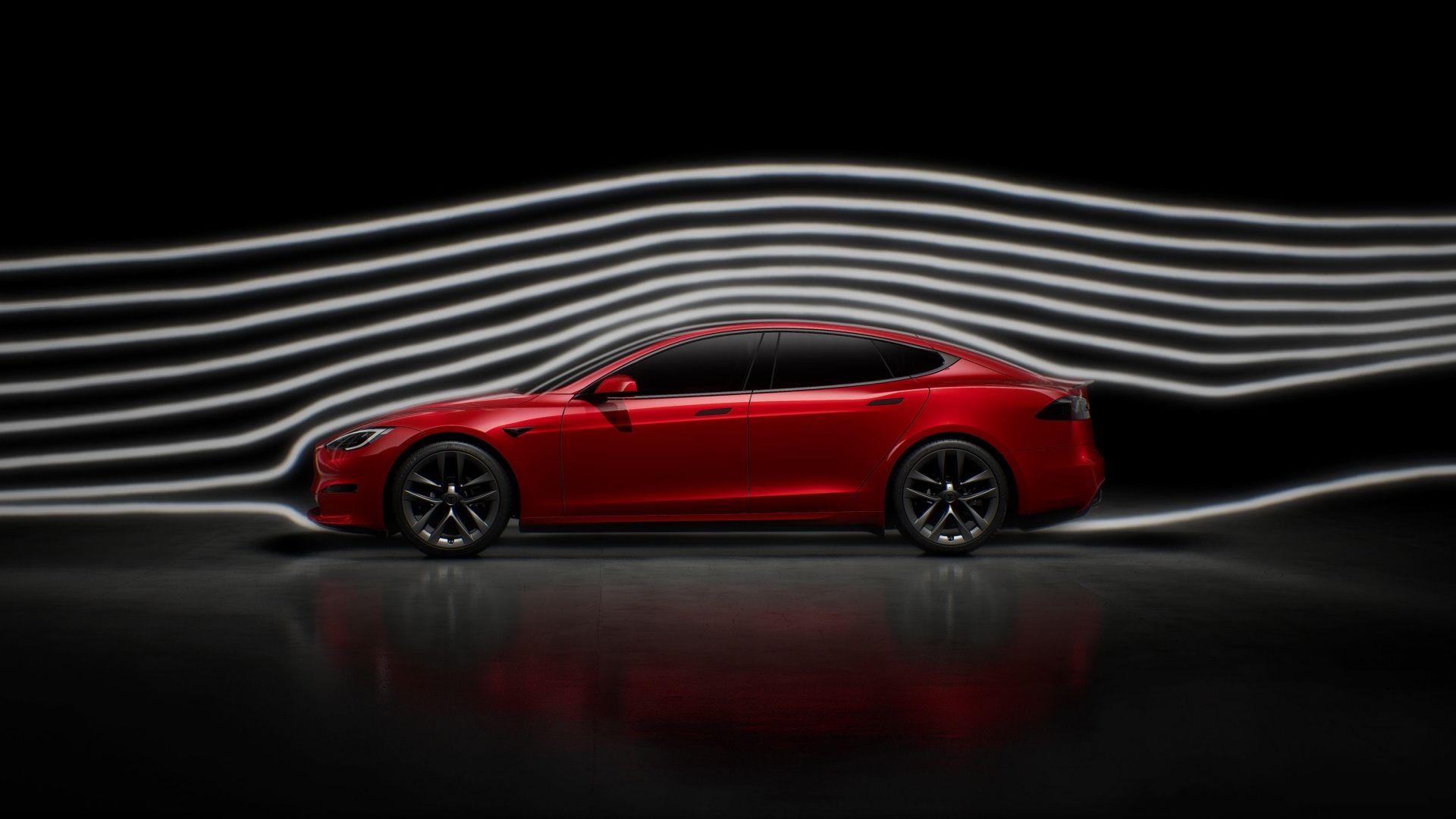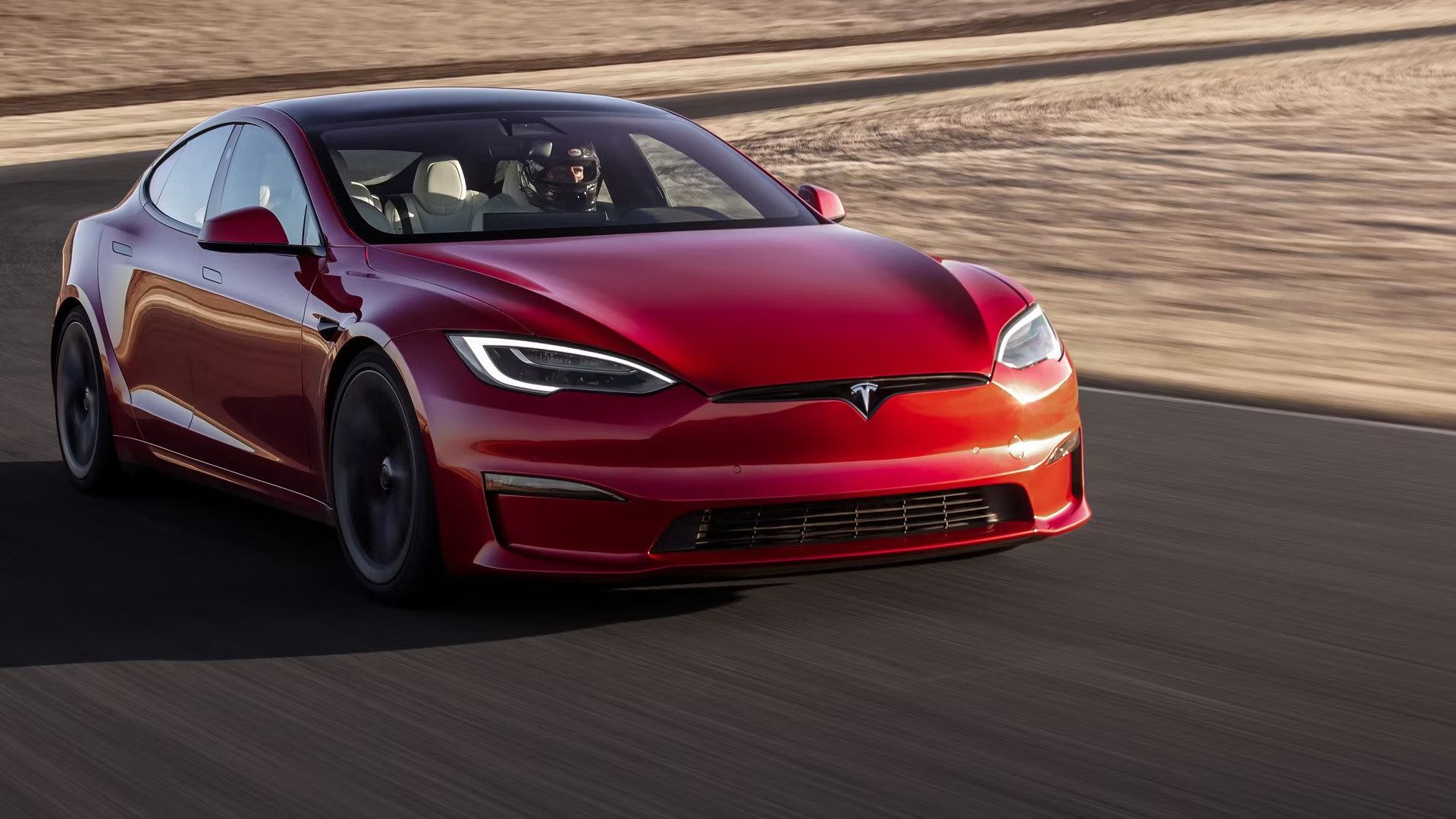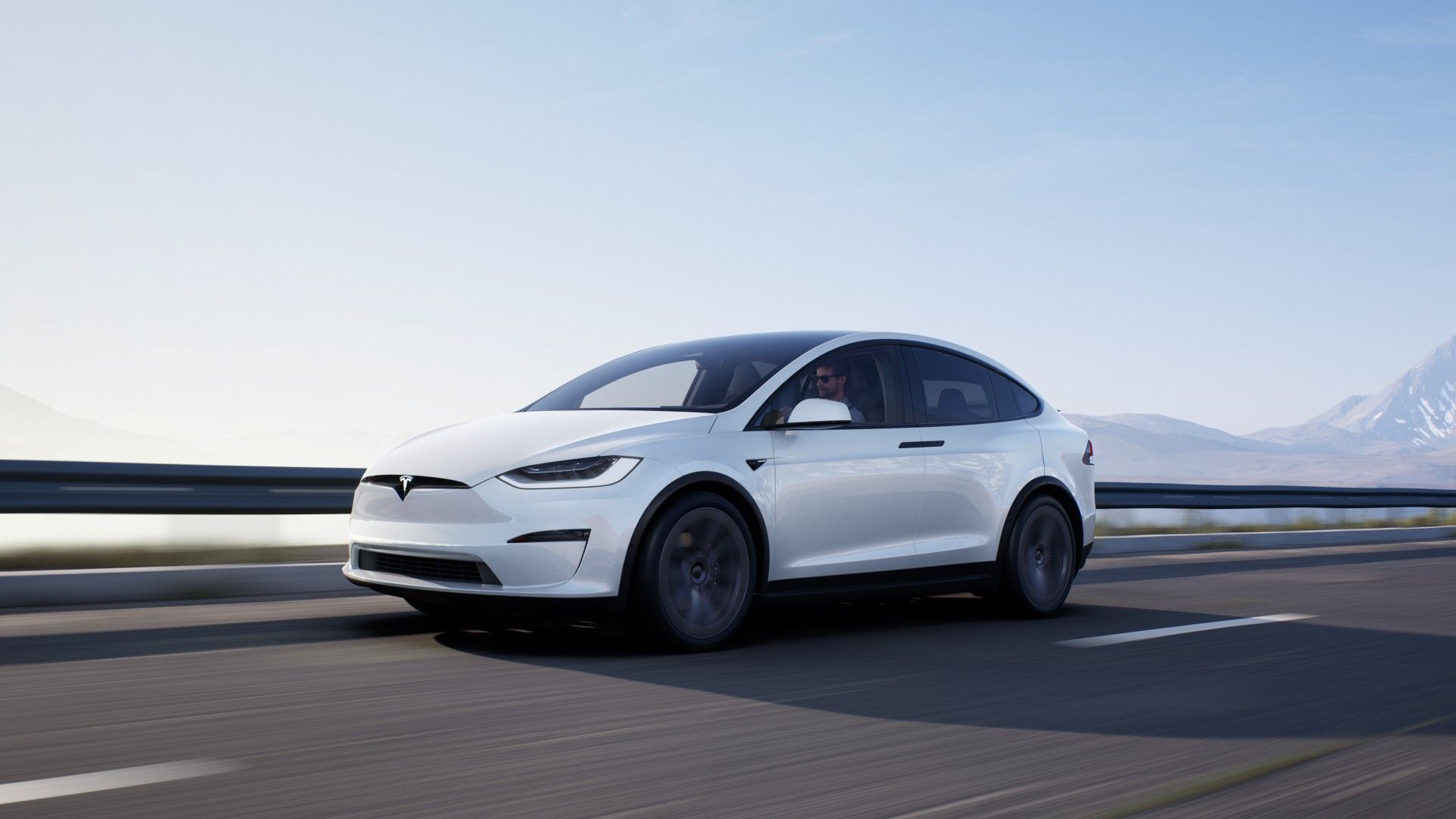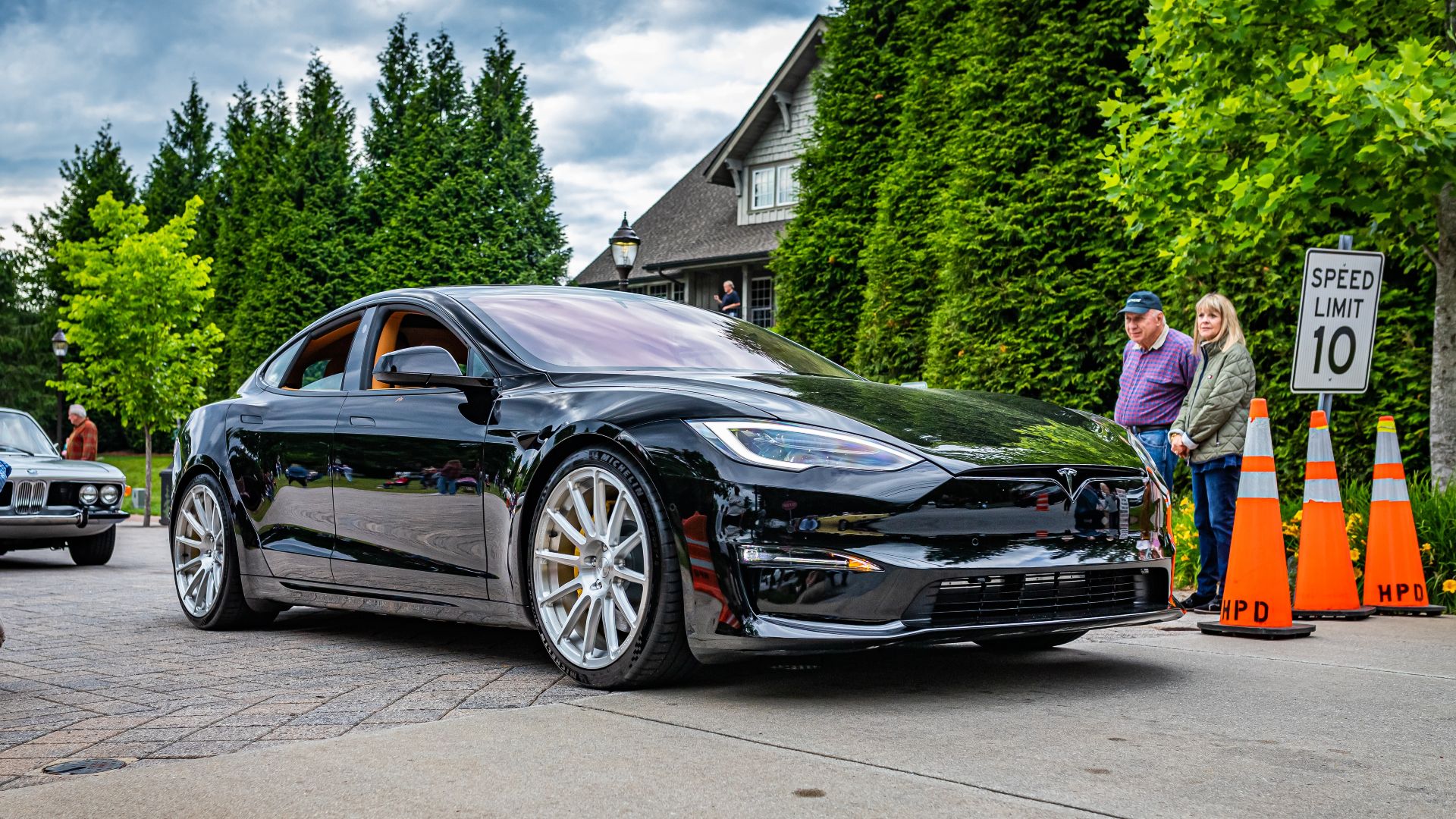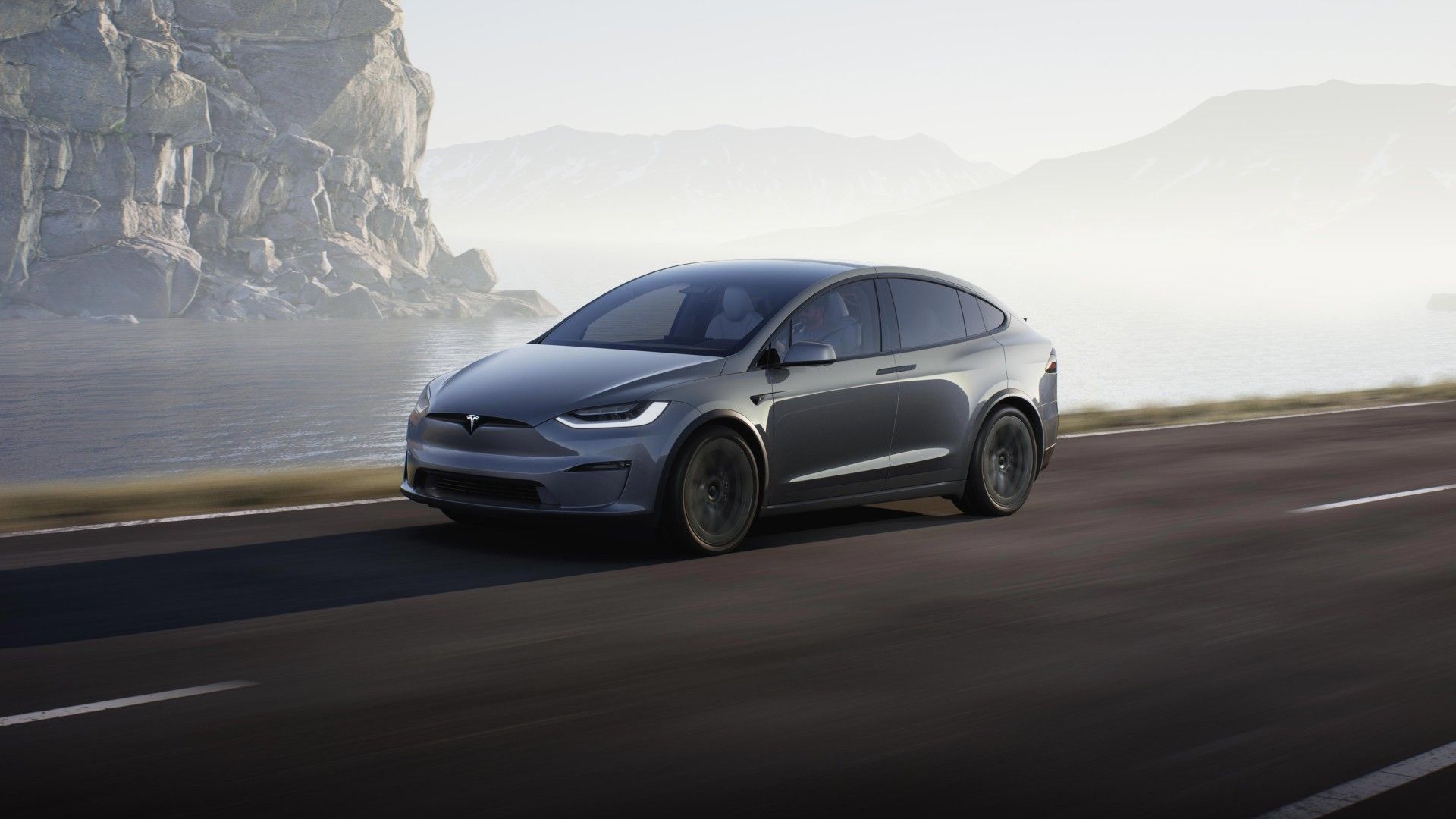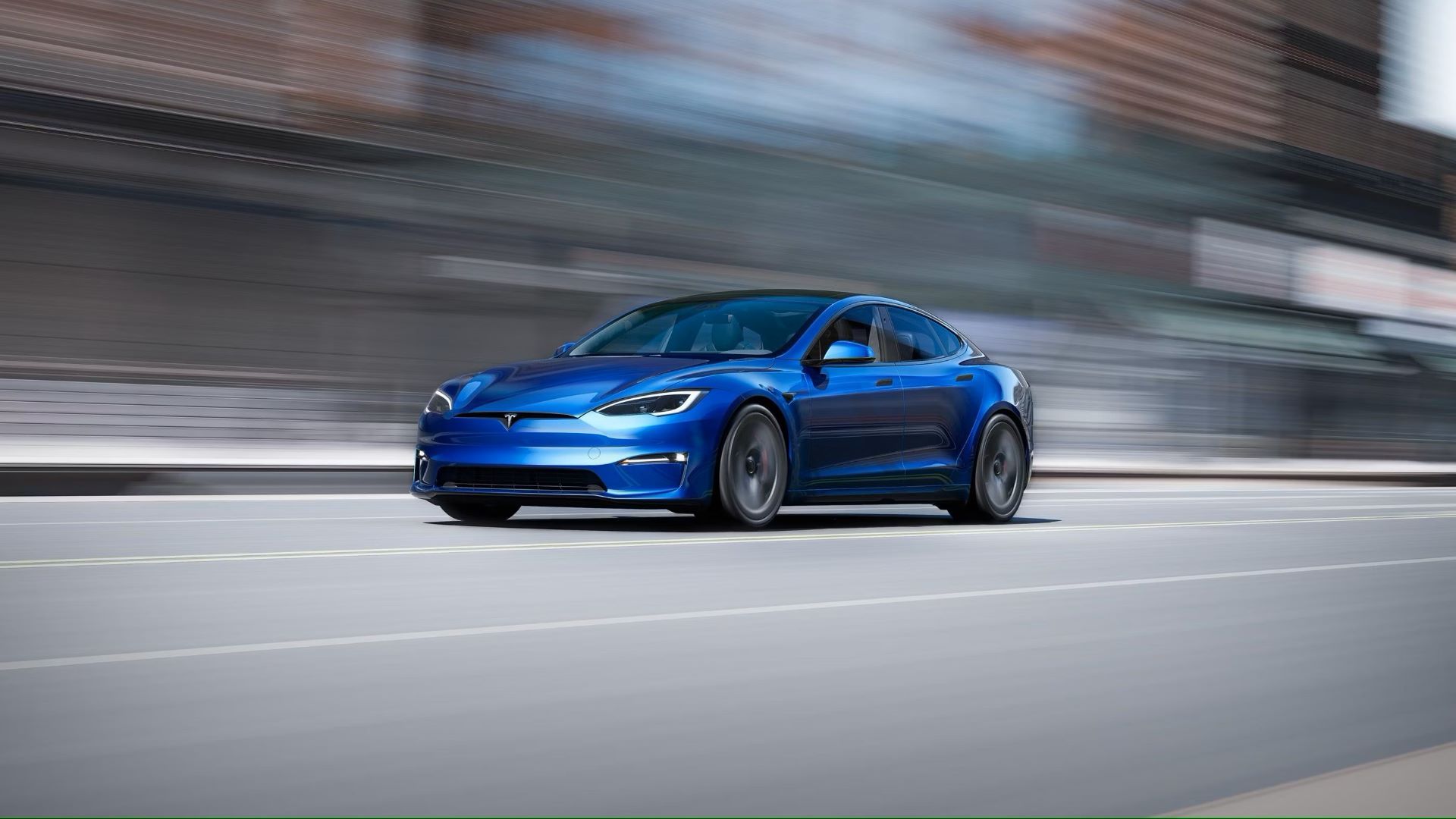By now, most people who know battery electric vehicle (BEV) brands are aware of the fact that some EVs out there accelerate pretty darn fast. Almost impossibly so, since up until some of these EVs came about, internal combustion engine hypercars would usually do 0-60 MPH in the low three-second range and a quarter-mile in just over 10 seconds, with very few and expensive exceptions doing it in under 10 seconds.
In comes Tesla with a big family sedan, the Model S Plaid with a price tag of a luxury vehicle, not that of a supercar or hypercar, and it blasts the quarter mile in the low nine seconds and a claimed, mind-blowing, sub-two second 0-60 MPH, according to Tesla. A few other EVs are even faster. The Lucid Air Sapphire with up to 1,234 max horsepower does a claimed 0-60 MPH in 1.89 seconds and Hagerty timed it at 9.1 second quarter mile, while the Tesla Model S Plaid did it in 9.3 seconds.
Purpose-built EV hypercars such as the Rimac Nevera and the McMurtry Spéirling are breaking new ground in the performance department, paving the way for future, more accessible EVs sports cars. Each car handles the incredible output the combined power of their electric motors put out differently. Tesla has a specific launch setting called Drag Strip Mode. In this article, we’re going to talk about how it works.
Every technical specification and feature discussed in this article was sourced from Tesla.
Drag Strip Mode Temperature Management
Drag Strip Mode is a feature focused entirely on straight-line acceleration from a standstill. To achieve that, the car will do a few things once the driver selects the mode via the center touchscreen. To kick things off, once Drag Strip Mode is selected, the fans will start cooling the drive units since they make the most horsepower when they’re cold. At the same time, the battery pack will be warmed up to an optimal temperature range. So, cool motors, warm batteries, and the preconditions for the launch, as far as the temperature of the car components goes, are ready.
If we’re considering the Model S Plaid, the car has three electric motors, one powering each rear wheel and one powering the front wheels, effectively creating an all-wheel drive system. Taking into account the Model S Plaid specs, AWD is paramount to ensure a quick acceleration. Otherwise, the instant torque delivery of the electric motors solely to the rear wheels or front wheels would leave the car burning rubber and not moving forward at a decent pace for several seconds at the least.
Tesla Model S Plaid Specs
|
Motor Layout |
Tri-motor AWD |
|
Horsepower |
1,020 hp |
|
Torque |
1,050 lb. ft. |
|
0-60 MPH |
1.99 sec. |
|
Top Speed |
200 mph |
|
Range |
396 miles |
|
Base MSRP |
$86,090 |
(Source: Tesla)
So, the Model S Plaid is quick, and fast, producing amazing performance numbers for a big family saloon. But, that 1.99 second 0-60 mph you won’t get without a proper setup. This means full use of Drag Strip Mode, a patch of road or drag strip with enough grip, and heated tires.
Pull Up To The Line And You Get Cheetah Stance
Once Drag Strip Mode is selected and the instrument panel has indicated that the vehicle is ‘Peak Performance Ready’, the driver can pull up to the line and set the usual launch by using their foot to hold the brake hard while the right foot is on the accelerator pedal, the car goes into Cheetah Stance. The Cheetah name is a clever pick from Tesla, since the cheetah is considered to be the world’s fastest land animal, capable of sprinting from 0-60 mph in less than three seconds.
The Cheetah Stance Dips The Model S Lower For Better Acceleration
To the Tesla, the Cheetah stance lowers the suspensions, but not evenly. The front suspension is lowered even more than the rear, and it stays in this stance even during the hard G force it is subject to while it accelerates. This is so that there is some weight transfer to the front wheels, and they get some extra grip, being able to apply more power to the ground before traction control needs to interfere. After the car assumes this Cheetah stance, the instrument panel will indicate that Drag Strip Mode is ready, and the driver can then release his foot off the brake pedal and the car will launch as fast as it possibly can.
The Drag Strip Mode can be turned off at any time, but if it isn’t, either because the driver forgot to turn it off or for any other reason, it will stay on for a full three hours before it turns itself off automatically. Tesla may not have the best self-driving tech yet, but it sure makes up for it with its performance technology.
Only Available On The Model S And Model X
With the refresh of the 2021 models of the Model S and Model X, the Drag Strip Mode became available, but only for these two models from Tesla. The Cheetah stance requires the electronically controlled air suspension available on these models, which share the same base platform.
So we won’t be seeing this feature on the Model 3 or Model Y, the Tesla Cybertruck, or even the upcoming Model 2, unless Tesla decides to offer air the same suspension system on these trims, as well as the crazy high power output to even make it worth it. As it stands currently, Drag Strip Mode is capable of putting supercars to shame on any drag strip, and making this feature available on a lesser-performing vehicle could hurt its street cred a bit.
A Couple Of Caveats
Using Drag Strip Modes is the best option for off-the-line maximum acceleration times, but it also comes with a few drawbacks that Model S and Model X owners need to be aware of.
- First, keeping the car in this mode drains the battery faster since the cooling fans will be working overtime to keep the drive units cool, while some energy will also be used to keep the battery pack warm.
- Second, if you plan on using this feature in cold weather, you should know that it reduces the effectiveness of cabin heating since Tesla’s heat pump won’t be able to take too much heat from the battery to warm the cabin if the goal is to keep the battery warm for optimum power delivery.
- Third, since the launch is incredibly fast, leaving the driver with little to no time to react to an unforeseen situation, Tesla cautions drivers that this mode is supposed to be used in a closed circuit only.
Launching a Model S or Model X on Drag Strip Mode at every headlight or after every stop sign on public roads is plainly unreasonable, dangerous, and unacceptable behavior. If not for these reasons alone, the significantly lowered ground clearance should also be taken into consideration, since any small bump on the road might damage the vehicle. With these concerns aside, a track day with a Model S Plaid and Drag Strip Mode promises to be a lot of fun.
Credit: Source link
